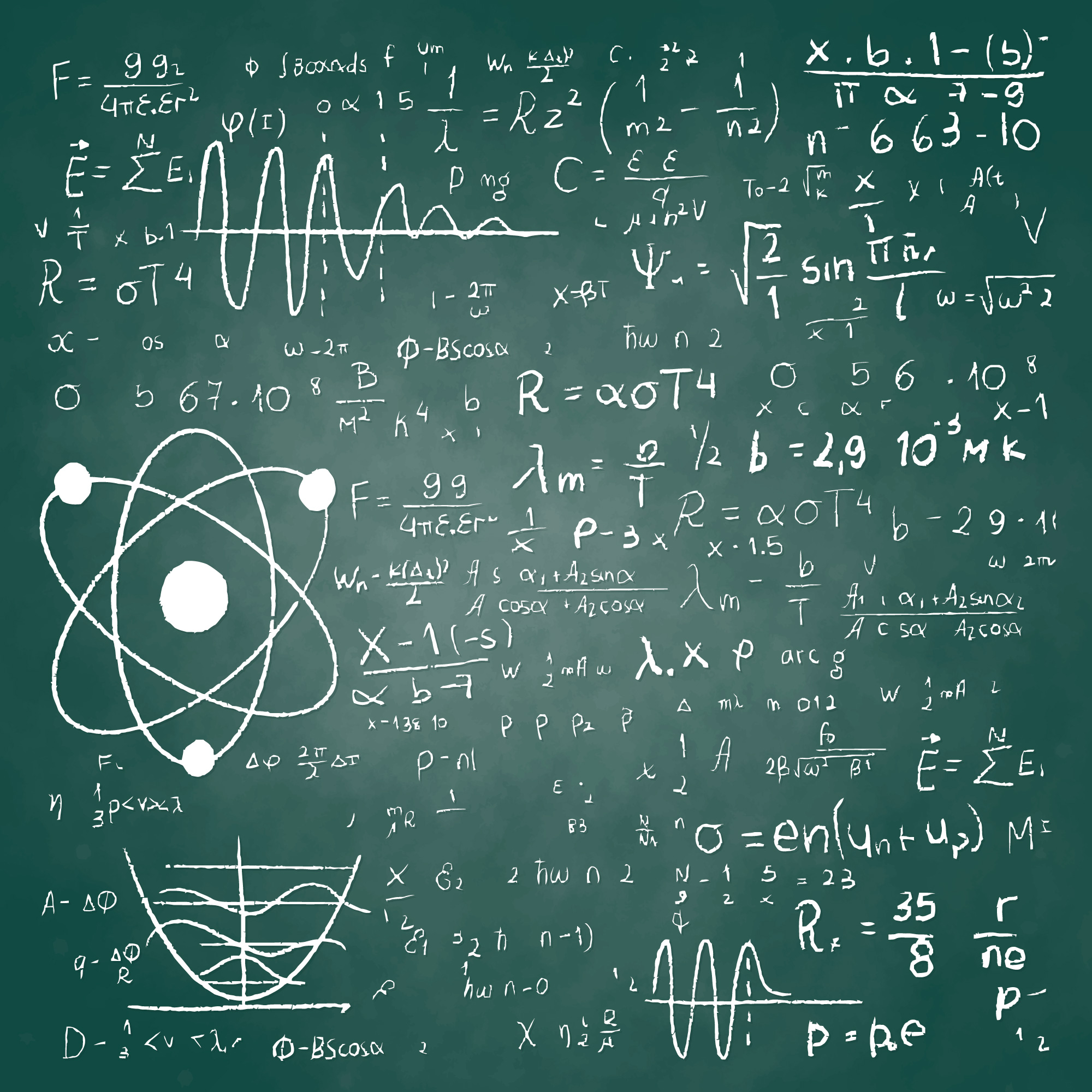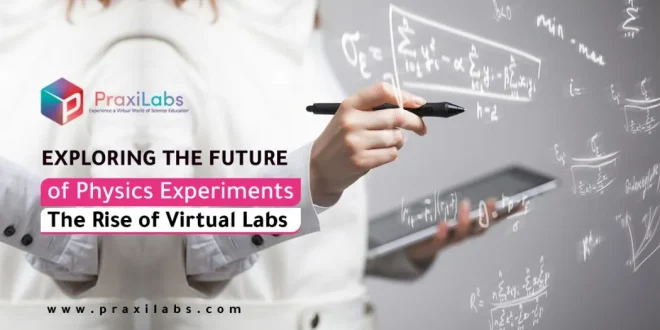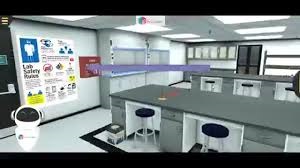Last Updated on August 22, 2025 by Muhamed Elmesery
Virtual labs for physics experiments are digital e-learning platforms that allow students to perform and understand physics experiments in a simulated environment. These platforms offer a variety of features, such as 3D immersive, interactive, realistic environments, and the ability to repeat experiments many times. They cover various fields of physics, including mechanics, thermodynamics, optics, heat, electricity, and more.
In this blog post, we will explore the world of virtual labs for educational physics experiments, their concepts, features, and fields, and we will take a closer look at PraxiLabs’ physics experiments virtual labs.
Table of Contents
Virtual Labs, Real Learning: Embracing the Concept of Virtual Physics Experiments
Virtual labs for physics experiments represent a cutting-edge way to hands-on physics learning. These virtual laboratories provide students with the opportunity to engage more in practical experiments and explore the fundamental principles of physics in a safe and virtual environment.
By leveraging advanced 3D simulation technology, virtual labs offer a range of benefits, including safety, accessibility, cost-effectiveness, and more. Students can access these physics virtual labs anywhere, anytime, and engage in immersive and interactive 3D interactions to perform experiments related to various branches of physics, such as mechanics, magnetism, optics, heat, thermodynamics, electricity, and more.
Additionally, the virtual physics lab has been praised for their ability to familiarize students with experiments before engaging in class, making them a valuable educational tool.
Pick the Best Virtual Plan For You

Why Virtual Labs for Physics Experiments?
Safety hazards, high costs, challenges such as limited access for students, lack of engagement and student interest, and high student dropout rates are only some of the many problems that traditional physics labs in science education face.
Labs in educational institutions can no longer accommodate the large and growing number of students. Prohibitive time constraints prevent instructors and professors from providing each student with the opportunity to conduct experiments themselves in the lab.
Hazardous materials require careful hands and proper supervision. In the educational field, technology is constantly evolving and developing, to cater to the ongoing need and demand for progress. Educational institutions need to evolve as well, to match the ever-changing needs of modern society, thus ensuring the provision of the latest methods and technologies to their students. And this is where virtual labs for physics experiments come in.
Advantages of Virtual Physics Experiments Unveiled
Using virtual labs for physics experiments education has a wide range of interactive features such as:
Immersive interaction and 3D virtual experiments
Virtual physics lab online provides interactive and immersive virtual 3D science experiments simulations of a realistic laboratory experiments for students with better management of time, skills and knowledge to increase the learning outcomes.
Cost-effectiveness
Performing some experiments in real physics laboratories can be very expensive. Physics simulation online reduces the need for expensive tools, equipment, materials, and maintenance for doing experiments, so educational institutions can invest in virtual laboratories to provide their students with a larger number of experiments and save more money.
Enhanced Safety
Performing experiments by using a virtual lab protects students from any dangers they may face while conducting dangerous experiments in real labs. It is an effective method for preventing laboratory accidents by avoiding hazards such as electricity. So, virtual labs for physics experiments provide a safe environment for students and ensure their safety while exploring various scientific concepts and protocols.
Time efficiency
By using online physics experiments, you can save more time and effort, as they eliminate the need to move between different laboratories. Students can save time by accessing experiments and learning resources without the need for setup or cleanup which enables them to focus more on the core learning objectives.
Available anytime, anywhere and for many times
Virtual labs for physics experiments provide a virtual learning and teaching environment that aims to develop student’s practical skills and learning outcomes. As they are available through the Internet, learners can perform different complex physics experiments without being restricted to specific places or specific times as in the case of using real laboratories. Students can conduct their experiments with 24/7 unlimited accessibility.
Also, by using virtual labs, students can repeat their laboratory experiments many times, until they grasp and understand all the information.
A Closer Look at PraxiLabs Physics Experiments Virtual Labs
PraxiLabs virtual labs provide an even better experience with a new and enhanced design that is user-friendly. As part of our ongoing development, we constantly aim at providing what is best and fitting for our clients’ needs, hence our constant updates and additions.
PraxiLabs enriches the experimentation process through visual aids that guide the students through the process. Students no longer get stuck, but rather enjoy the help of a 3D virtual lab partner, when needed, which also provides guidance to prevent wrong choices. Moreover, students are quickly tested on the basic results of their experiment to ensure an enhanced learning experience.
PraxiLabs offers a wide variety of labs from different science branches, providing a broad spectrum of learning opportunities.
We provide virtual labs for physics science experiments in:
Properties of matter virtual labs
- Archimedes Principle
- Young’s Modulus for a Metallic Rod
- Determination of Coefficient of Viscosity by Stokes Method
- Density Measurement
Waves virtual labs
- Focal Length of a Convex Lens Using General Law
- Simple Pendulum
- Hooke’s Law
- Speed of Sound Using Open Columns
- Speed of Sound Using Closed Columns
Modern physics virtual labs
- Black Body Radiation
- Laser Beam Divergence
- Laser Electro-Optic Effect
- Millikan Oil Drop
- Michelson’ Interferometer
- I-V Characteristics of Solar Cell (I)
- I-V Characteristics of Solar Cell (lI)
- I-V Characteristics of Solar Cell (llI)
- Zeeman Effect
Heat and thermodynamics virtual labs
- Specific Heat of Solids
- Boyle’s Law of Gases
- Joule’s Experiment
Mechanics virtual labs
- Free Fall
- Motion on Inclined Surface
- Ballistic Pendulum
- Newton’s Second Law
Magnetism virtual labs
- Magnetic Moment of a Bar Magnet
- Magnetic Field of a Circular Loop Current
Electricity virtual labs
- Measurement of Ohmic Resistances Using Ammeter and Voltmeter
- Study the I-V Characteristics of Non-Ohmic Resistance Simulation
- Kirchhoff’s Loop Rule
- RC Circuit (Charging Capacitor)
- RC Circuit (Discharging Capacitor)
- Variation of the Resistance of a Thermistor with Temperature

Virtual Physics Labs Unleashed: Your FAQs Answered
How to use virtual labs?
Before starting a virtual lab experiment, students are advised to read the instructions. Most virtual labs provide ‘step-by-step’ user guides to help students. Some platforms also offer pre-installed labs with step-by-step instructions, allowing users to easily navigate and conduct any physics simulation.
What’s included in virtual labs?
Virtual labs typically include a variety of physics experiments that students can interact with and conduct easily. Some platforms also offer extra lab resources such as lab manuals, tutorials, MCQs, enriching information files, and more. Additionally, users can collect data from different runs, analyze them, fill in appropriate tables and sheets, and observe how nature works.
Are virtual labs free?
While some virtual labs may require a subscription, others offer free access. For example, PraxiLabs offers 30 days of full free access to 20 virtual science experiments. Similarly, the PhET Interactive Simulations project at the University of Colorado Boulder provides free interactive math and science simulations.
Can I get support while using virtual labs?
Yes, many virtual lab platforms offer technical support to their users. For instance, PraxiLabs offers 24/7 tech support.
Are virtual labs effective?
Yes, virtual labs are effective in enhancing learning experiences. For instance, PraxiLabs, holds an 80% learning retention rate among its users. We have also received positive feedback from educators, who have noted that virtual labs offer a quality alternative to in-person labs and allow students to actively engage with the material.
Now is your educational institution’s moment to power up your students’ inner scientists and open up a world of possibilities!
 PraxiLabs A virtual world of science
PraxiLabs A virtual world of science







